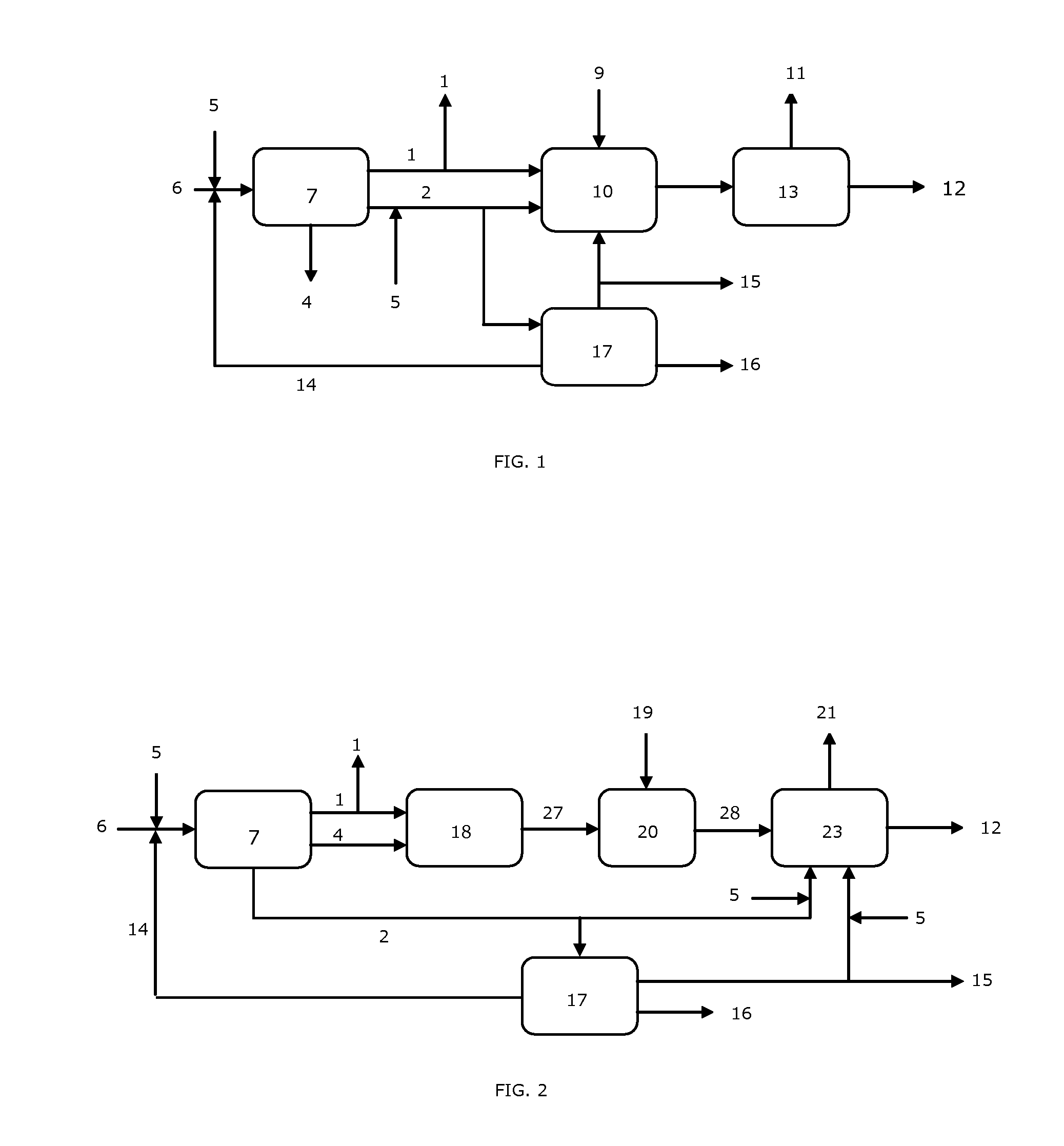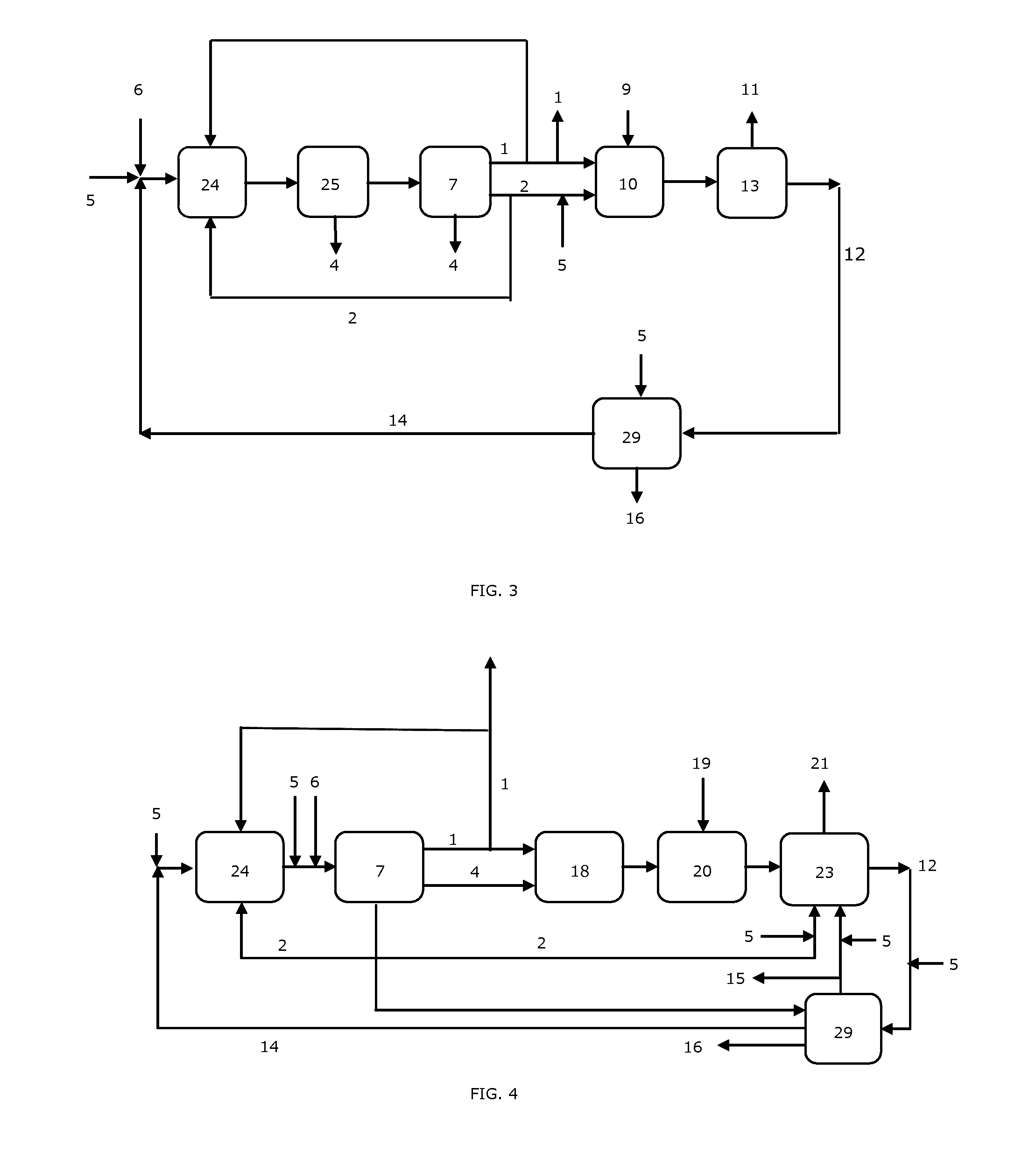Method and apparatus for treatment of effluents from production plants of epoxy compounds
- Summary
- Abstract
- Description
- Claims
- Application Information
AI Technical Summary
Benefits of technology
Problems solved by technology
Method used
Image
Examples
Example
DETAILED DESCRIPTION OF THE DRAWINGS
[0028]The scheme shown in FIG. 1 indicates that a propylene oxide production plant according to the prior art comprises a chlor-alkali unit 7, for instance a diaphragm- or membrane-type chlorine-caustic soda cell, fed with brine obtained by dissolving a solid salt 6, for instance sodium chloride, into water 5, with optional reintegration of recycled salt 14. The products of the chloralkali unit consist of chlorine 1, catholyte 2—which in the case of a diaphragm chlorine-caustic soda cell indicatively contains 15% NaOH and 15% NaCl and in the case of a membrane chlorine-caustic soda cell contains a 32% by weight aqueous solution of caustic soda—and hydrogen 4. Chlorine 1 and catholyte 2, optionally diluted with water 5, are fed to the propylene oxide unit 10, where they react with propylene 9 according with the above described reaction scheme. The reaction mixture is sent to a separation unit 13 which extracts propylene oxide 11 and discharges depl...
PUM
 Login to View More
Login to View More Abstract
Description
Claims
Application Information
 Login to View More
Login to View More - R&D
- Intellectual Property
- Life Sciences
- Materials
- Tech Scout
- Unparalleled Data Quality
- Higher Quality Content
- 60% Fewer Hallucinations
Browse by: Latest US Patents, China's latest patents, Technical Efficacy Thesaurus, Application Domain, Technology Topic, Popular Technical Reports.
© 2025 PatSnap. All rights reserved.Legal|Privacy policy|Modern Slavery Act Transparency Statement|Sitemap|About US| Contact US: help@patsnap.com



